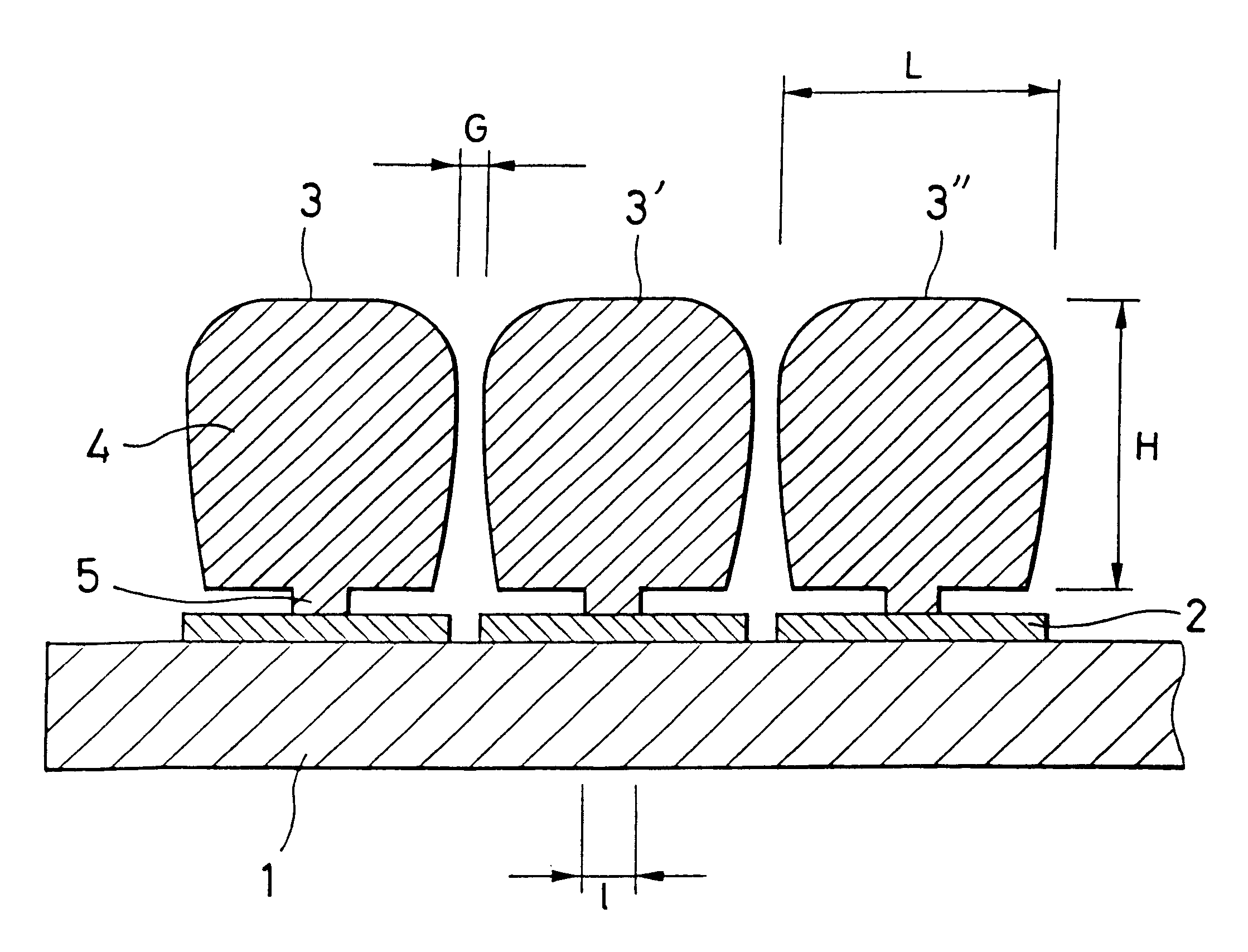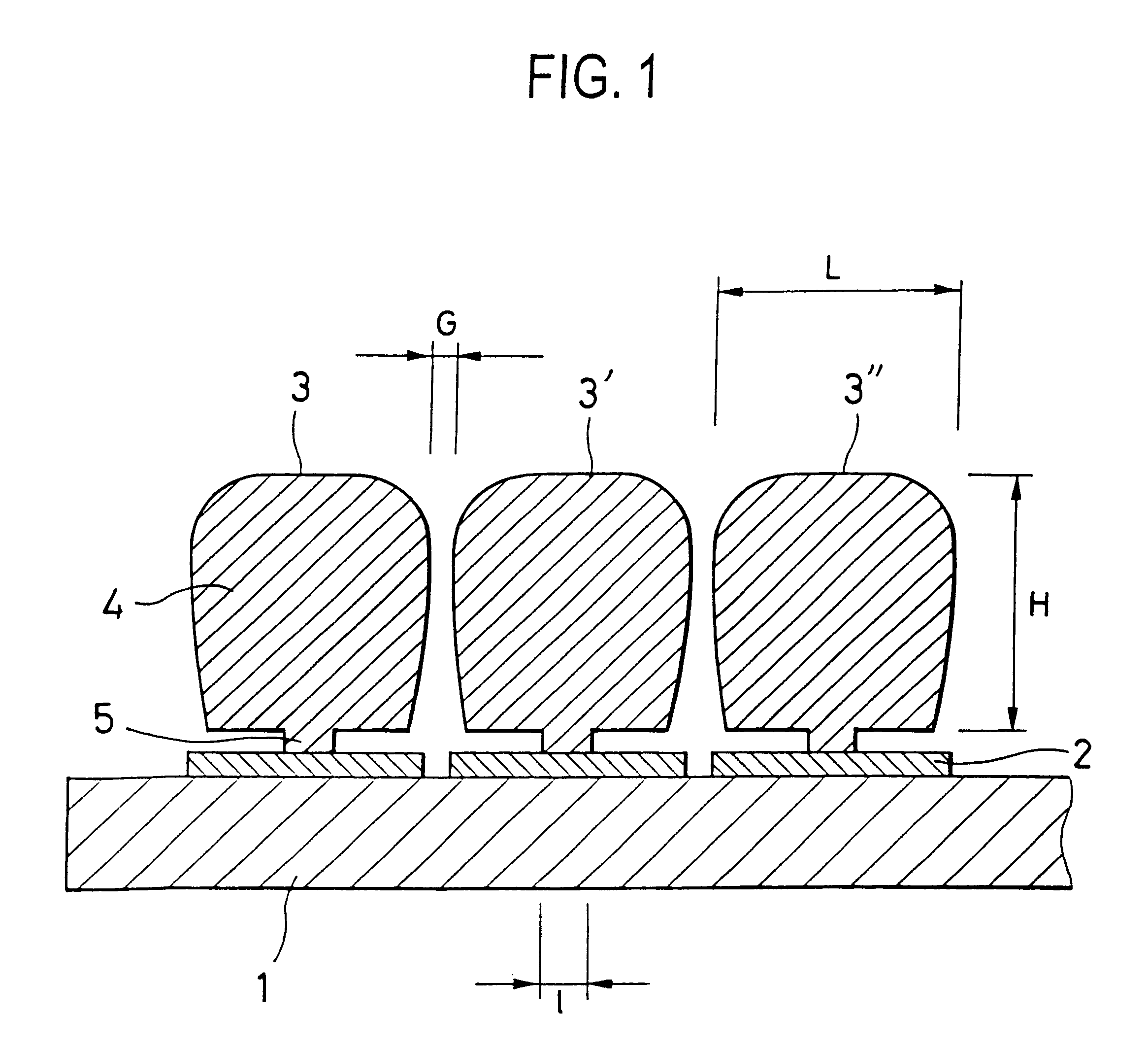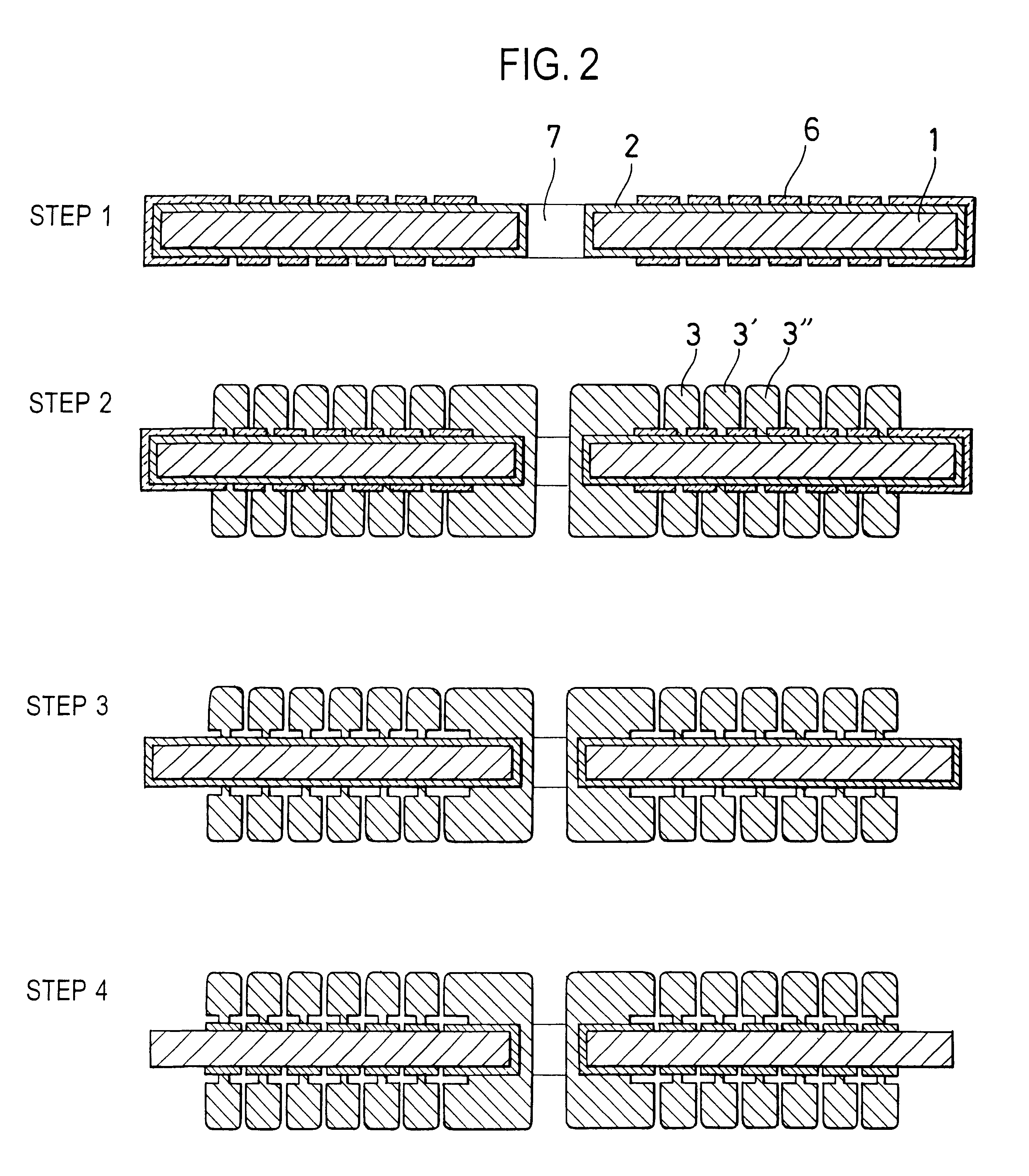Planar coil and planar transformer, and process of fabricating a high-aspect conductive device
a technology of planar coil and conductive device, which is applied in the direction of fixed transformers or mutual inductances, conductive pattern formation, inductance, etc., can solve the problems of increasing the wiring resistance of the primer film, increasing the spacing between conductive patterns, and reducing so as to achieve excellent electric properties, reduce the direct current resistance of the planar coil, and increase the thickness of the conductor
- Summary
- Abstract
- Description
- Claims
- Application Information
AI Technical Summary
Benefits of technology
Problems solved by technology
Method used
Image
Examples
example 1-1
Examples regarding the first aspect of the invention are given below.
To fabricate 284 coils on a 3-inch substrate, the following operations were carried out. A through-hole of 0.2 mm in diameter was provided through an unclad FR4 substrate (of 100 .mu.m in thickness) at a given position thereof, and 1-.mu.m thick copper layers were formed on both surfaces of the substrate, using an electroless copper plating solution.
A positive photoresist was spin-coated on each copper layer at a dry thickness of 5 .mu.m.
Then, the resist was stripped away from the circumference of the through-hole. At the same time, a pattern having a resist pattern width of 90 .mu.m and a resist pattern spacing (i.e., a line width of the conductor exposed) of 20 .mu.m was provided by photolithography to form a coil portion. The through-hole was provided to make connections between the copper layers on both surfaces of the substrate. A pattern of a portion with the resist stripped away therefrom, i.e., the coil por...
example 1-2
A through-hole of 0.2 mm in diameter was provided through the same unclad FR4 substrate as in Example 1-1 at a given position thereof, and 1-.mu.m thick copper layers were formed on both surfaces of the substrate, using an electroless copper plating solution.
A positive photoresist was spin-coated on each copper layer at a dry thickness of 5 .mu.m, and a pattern having a resist pattern width of 110 .mu.m and a resist pattern spacing (i.e., a line width of the conductor exposed) of 20 .mu.m was provided by photolithography. The through-hole was provided to make connections between the copper layers on both surfaces of the substrate. A pattern of a portion with the resist stripped away therefrom, i.e., a coil portion was in a round spiral form having an innermost radius of 0.9 mm and 9.5 turns.
This was plated in a bright copper sulfate plating bath. The concentration of copper sulfate in a plating solution was 70 g / l, and the plating solution temperature was 25.degree. C. A pipe with a...
example 1-4
An NiZn ferrite substrate having a diameter of 3 inches, a thickness of 350 .mu.m and a relative permeability of 800 was provided on both its surfaces with 1-.mu.m thick copper layers, using an electroless copper plating solution.
A positive photoresist was spin-coated on each copper layer at a dry thickness of 5 .mu.m, and a pattern having a resist pattern width of 90 .mu.m and a resist pattern spacing (i.e., a line width of the conductor exposed) of 20 .mu.m was provided by photolithography. A pattern of a portion with the resist stripped away therefrom, i.e., a coil portion was in a round spiral form having an innermost radius of 0.9 mm and 5.75 turns.
This was plated in a bright copper sulfate plating bath. The concentration of copper sulfate in a plating solution was 70 g / l, and the plating solution temperature was 25.degree. C. Plating was carried out at a current density of 2.5 A / dm.sup.2 as in Example 1-1 until a plating thickness of 150 .mu.m was obtained. At this time, the s...
PUM
| Property | Measurement | Unit |
|---|---|---|
| power | aaaaa | aaaaa |
| thickness | aaaaa | aaaaa |
| thickness | aaaaa | aaaaa |
Abstract
Description
Claims
Application Information
 Login to View More
Login to View More - R&D
- Intellectual Property
- Life Sciences
- Materials
- Tech Scout
- Unparalleled Data Quality
- Higher Quality Content
- 60% Fewer Hallucinations
Browse by: Latest US Patents, China's latest patents, Technical Efficacy Thesaurus, Application Domain, Technology Topic, Popular Technical Reports.
© 2025 PatSnap. All rights reserved.Legal|Privacy policy|Modern Slavery Act Transparency Statement|Sitemap|About US| Contact US: help@patsnap.com



